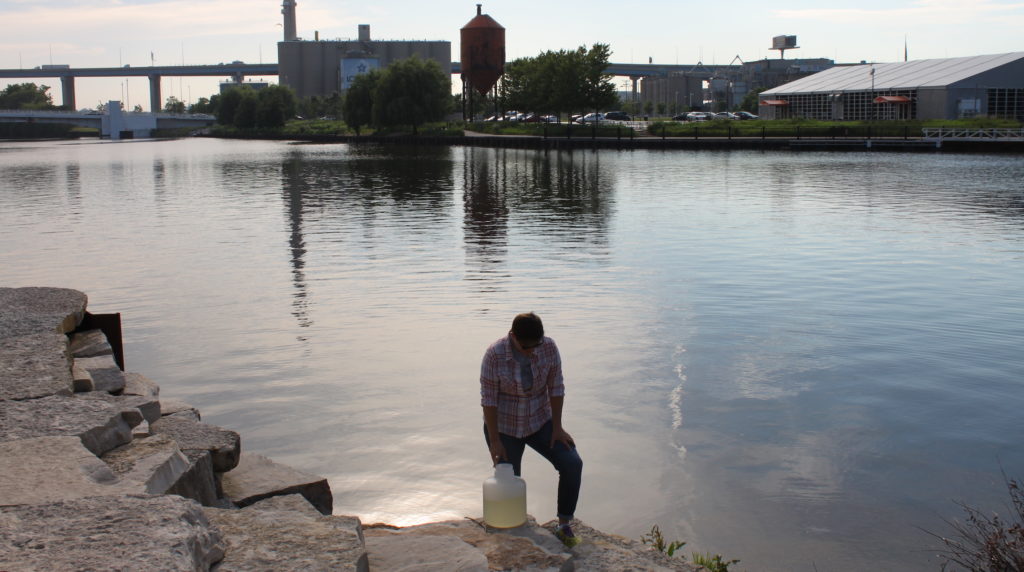

While pursuing her engineering studies, Paige Peters creates a business that treats wastewater 16x faster
For Paige Peters, studying environmental engineering was always part of the plan. Starting her own business was not.
In addition to being the founder and CEO of Milwaukee-based firm Rapid Radicals Technology, Peters, 30, is currently pursuing a PhD from Marquette University in civil engineering with an emphasis on water and wastewater treatment. Her lifelong passion for water, when combined with the “engineering mind” she displayed even as a child, meant environmental engineering was a perfect fit.
“For me, what I love about water is that it affects everybody,” Peters said, “so for someone who loves people so much and loves making those relationships and building those connections, it made the most sense to do water: It affects everybody’s life every single day.”
After graduating with a bachelor of science degree from Marquette in civil engineering, Peters returned in 2015 to get her master’s under Dr. Dan Zitomer, focusing on combined sewer overflows and wastewater treatment. At that time, she realized she and Dr. Zitomer had found a potential solution to a problem that plagued not just Milwaukee but cities across the country.
Combined sewer systems, a model commonly used in the Great Lakes region, carry sanitary water and storm water in the same pipe, which means the water must get treated before being discharged. However, treatment centers can only handle so much water, so in the event of heavy rainfall, combined sewers may overflow — discharging waste into lakes and rivers or even into people’s basements.
“You trust [the system] is going to lead that waste away from you.” Peters said. “It’s a public health and environmental health issue.”
Peters aimed to solve the problem by shortening wastewater treatment time for combined sewers from eight hours to under 30 minutes – 16 times faster. This technology became the foundation for Rapid Radicals Technology, which Peters founded halfway through the second year of her master’s. If she successfully commercializes, Peters’ system would be the first of its kind in Milwaukee. Peters is currently working on building the first pilot.
“I was willing to take it on, because it sounded like a really fun adventure. I think this has been the best way to go about it,” Peters said.
Much of what motivated Peters to dive into entrepreneurship was the variety of resources available to those looking to start a business in Wisconsin – including young PhD students with no experience in business.
One of those resources was the Wisconsin Center for Technology Commercialization’s SBIR Ready program, which Peters discovered through her participation in I-Corps and her relationship with Marquette University. The SBIR Ready program provided Peters with the essential education and tools to help her apply for and win federal Small Business Innovation Research funding for her technology to advance her company.
Peters encourages other young entrepreneurs to tap into assistance programs and to build relationships with people who can advocate for them.
“When it came to starting a company, I didn’t know anything. My initial approach was to reach out to everybody with anything that I knew existed in terms of resources,” Peters said. “What I found in return was that there are so many resources available to you, and that everybody wants to help.”
“At the end of the day, it’s on you to move things forward. But you’re doing it wrong if you feel like you’re alone the whole time,” Peters said.
Balancing her PhD work and her business would seem like two hefty and competing challenges. Peters sees it as her motivation instead.
“The problem my work is seeking to solve needs a solution faster than if the academic and entrepreneurial worlds continue operating independent of one other,” she said. “I see the inherent value of them working together for more effective and efficient tech transfer. They operate under different priorities and different timelines, but they do truly complement each other. Every time we do something new or innovative, we make it easier for the next person to go down a similar path.”
